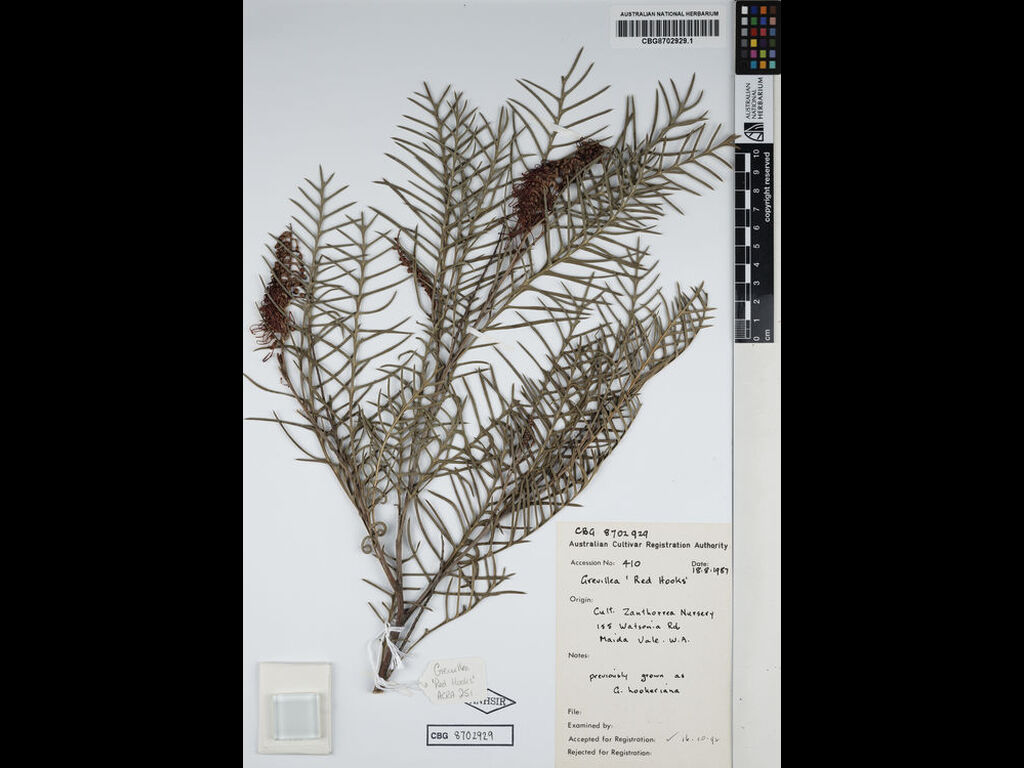Grevillea 'Red Hooks'
- File Number
- 410
- ACRA Field Book Number
- 251
- Registration Date
- 15/10/1992
- Application Received
- 18/08/1987
- Family
- Proteaceae
- Cultivar Name
- Grevillea 'Red Hooks'
- Origin
- This cultivar was widely grown as G. hookeriana or G. "hookerana" but is suspected to be a hybrid from G. longifolia x G. tetragonoloba. The cultivar registration was sought by Alec Hooper of Zanthorrea Nursery, 155 Watsonia Rd., Maida Vale, WA 6057. Reference specimen was received 18th August 1987.
- Characteristics
- A rounded, dense shrub up to 3m high by 4-5m across, with more or less horizontal branches. The bright green leaves are pinnately lobed, with narrow-linear lobes to about 30 mm. Overall leaf length is up to 15cm. The bright red, toothbrush-like racemes are usually held horizontally and are about 70mm long. They appear for most of the year but give a maximum display in winter and spring. The perianth is greyish green and the long, smooth style is bright red and tends to bend backwards. Diagnosis: The herbarium specimen is quite different to either supposed parent. G. 'Red Hooks' has 10 deep lobes in each leaf. Each lobe is 1-2 cm wide and revolute. Each lobe is up to 4cm long. G. tetragonoloba has deeply divided leaves with 3 lobes each revolute, length 2cm. G. longifolia has flowers not as dense as the other two with taller styles but these are very prominent. Leaves are 15.5cm long.
- Cultivation
- This cultivar is usually sold as G. hookeriana and is a very vigorous, dense grower which adapts well to most soils and climates. It must be grown from cuttings as it has not been known to set seed. Birds are attracted to the flowers and the cultivar makes a fine screen plant. It has been grown commercially for its foliage, which is used in floral arrangements.
- Publication
- Elliot, W.R. & Jones, D.L. (1990), Encyclopaedia of Australian plants suitable for cultivation 5: 63, 117, 154
- Colour Coding
- RHS Colour Chart 1966 Flowers: style: Red group 53A perianth lobe:close to Greyed Orange 174C
- Propagation
- Cuttings from semi-firm new growth
- Applicant Name
- Alec Hooper of Zanthorrea Nursery
- Uses
- As part of a mass planting or mixed in a shrubbery, or as a feature plant. Attracts nectar feeding birds.
- Availability
- Kuranga Nursery
- ANBG Accession Numbers
- ACC410, ACRA251, CBG8702929
- NSL ID
- -

